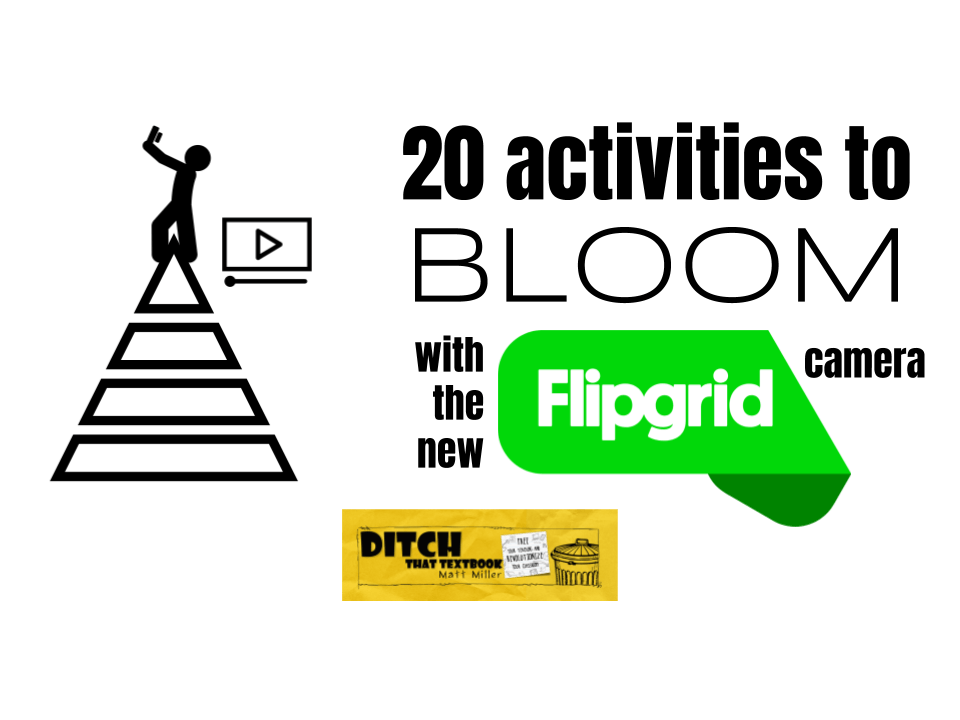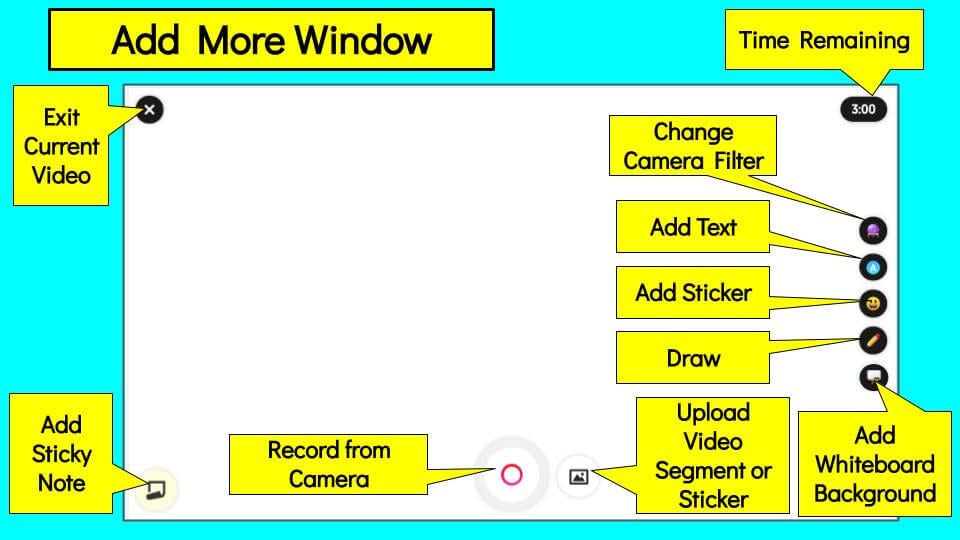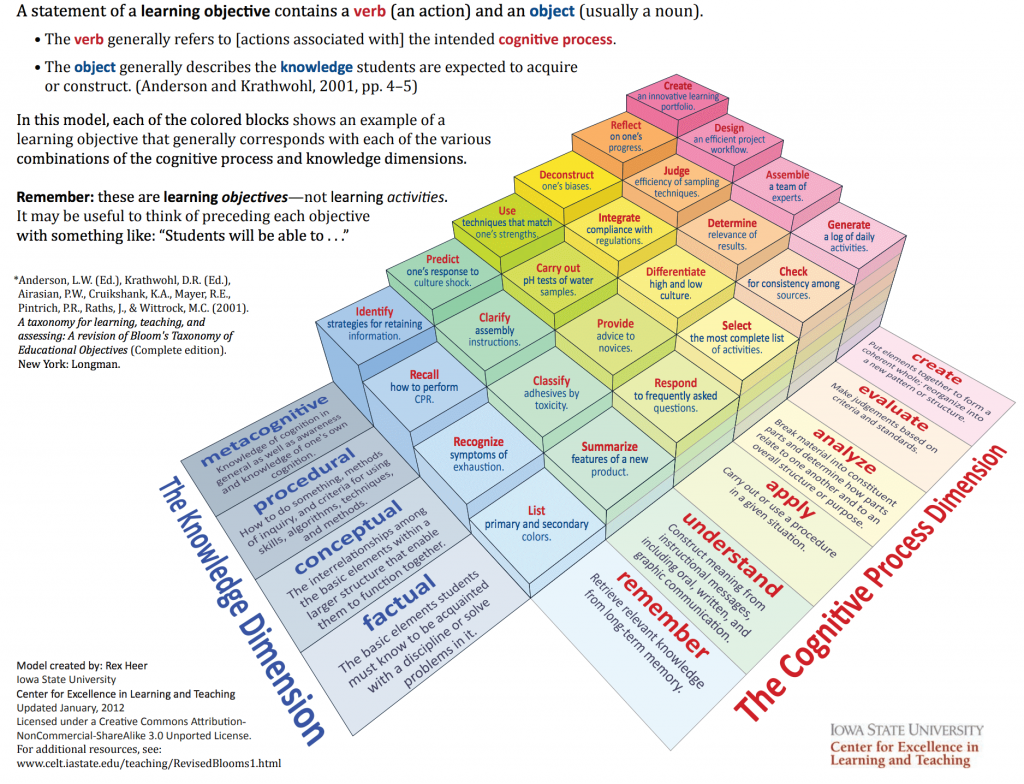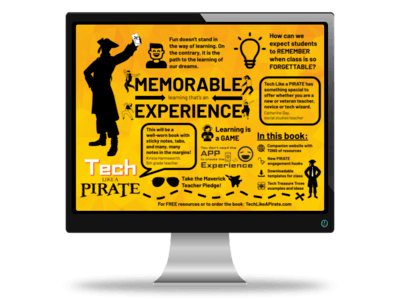
Flipgrid’s new camera empowers students to do some deep-thinking, impressive tasks to show what they know. Here are 20 ideas you can use.
Video is so easy to create in the classroom now. What used to take expensive equipment and advanced know-how can be created in seconds with devices we already have.
Video is a rich medium for learning. Students can practice speaking skills, show their passion through their voice, and make learning visible.
 In summer 2019, Flipgrid (flipgrid.com) released a new camera. All of its new features give students TONS of options for showing what they know and reflecting on learning:
In summer 2019, Flipgrid (flipgrid.com) released a new camera. All of its new features give students TONS of options for showing what they know and reflecting on learning:
- Filters (including pixel mode)
- Text boxes
- Stickers (emojis, accessories, etc.)
- Drawing/inking
- Whiteboard mode
- Live recording (make changes on the fly while recording)
- Trimming and arranging video clips
This post by educator Mike Mohammad outlines all the new features. His graphics (see one above) are fantastic, showing you what everything does at a glance.
I saw these features and started thinking …
You can do some high-quality learning with these features.
The camera goes farther than making prettier videos. They can lead to deeper thinking and more descriptive demonstrations of learning.
(Of course, they can be used superficially for just making videos prettier. And there’s nothing wrong with prettier if that’s your goal. But when we want to get the most out of technology for the sake of better learning, it has to go deeper than that. This new Flipgrid camera has tons of potential for that.)
So … what would that look like?
Let’s use Revised Bloom’s Taxonomy as our guide. It looks at the depth of thinking and the type of knowledge students are working with.

Photo via Center for Excellence in Learning and Teaching (CC BY-NC-SA 3.0) (Click for more information.)
Here are 20 practical Flipgrid activities you can use in your class that hit different levels of Revised Bloom’s Taxonomy:
REMEMBER
Retrieve relevant knowledge from long-term memory
1. Vocab/spelling run-down
Students place vocabulary words on the screen as text boxes. (Or images of sight words … or students type spelling words as they recall them. Ways they can practice the word:
- Spell it
- Use it in a sentence
- Give synonyms/antonyms
- Give examples/non-examples (Frayer model)
- Give characteristics (Frayer model)
The words can start at the bottom of the screen. As they use a word, they drag the word to the top of the screen to make a list of words they’ve covered.
Note: For it to be true “remember” in Bloom’s, students need to recall from long-term memory rather than recite it off a paper or screen in front of them.
Revised Bloom’s category: remember + factual
2. Step-by-step tutorial with photos/icons
Students can take their own photos (or find photos licensed for reuse) illustrating steps of a process. They can even create their own images with tools like Google Drawings, Canva, The Noun Project (icons), Flat Icon, etc.
Option 1: They can leave the images at the bottom of the screen. Pull them to the top when they talk about them.
Option 2: They can pause the video and add an image to illustrate a step. Then start recording again. Pause, remove an image, add a new image, start recording again.
Revised Bloom’s category: remember + procedural
3. Thinking about thinking strategies
Do you have favorite learning strategies that you share with your students? Encourage them to think about the way that they think? (If not, here are seven strategies you can use.)
Students could record these as informational videos for other students. (Really, as much for themselves as others.)
They could also record them as advice videos. They could advise students how to use the strategies in different situations.
Revised Bloom’s category: remember + metacognitive (information videos) or apply + metacognitive (advice videos)
UNDERSTAND
Construct meaning from instructional messages, including oral, written and graphic communication
4. The sticker/picture shuffle
Once students have learned something new, it’s helpful for them to show what they know. They can do that with stickers/emojis, images, and even short video clips.
Student can use these “virtual visual aids” to describe what they’ve learned in their own words.
Revised Bloom’s category: understand + factual
5. The one-problem deep dive
Solving lots of problems can be good repetition for practice. But doing a deep dive into one problem gives insight into how the student thinks. It helps the student better understand how he/she thinks. It helps the teacher see how the student sees the work.
Students can take a picture of a problem — one they’ve written on to solve or a “clean” problem they haven’t written on. They place the problem on one side of the video and their head/shoulders on the other. They can point to the parts of the problem and talk the viewer through their process.
Revised Bloom’s category: understand + procedural
6. Sort into categories
More or less? Column A or column B? To help students understand the relationship between items they’ve learned, they can sort them into categories.
Student places himself/herself in the middle of the video. They can prepare the items on the list in multiple text boxes ahead of time (or pause the video and add them individually). In the video, he/she places items in one column over the right shoulder or in another column over the left shoulder.
Revised Bloom’s category: understand + conceptual
APPLY
Carry out or use a procedure in a given situation
7. Speak for characters with emojis
Sometimes, we want students to understand characters, historical figures, people they’re studying. When they really understand those people, students can imagine what they might say or how they would think.
Students can answer questions posing as a person they’re studying. (i.e. Based on what we’ve learned, what would a past president think of the current state of the country?)
To add to the experience, students can place emojis, stickers or even photos of these people over their faces in the video while they talk. They can even try their hand at a spoken accent!
Revised Bloom’s category: apply + conceptual
8. Give advice with points
Once students have experienced something, it can be fun for them to give advice to others based on what they’ve learned and seen. It could be school-related (how to survive ninth grade) or content-related (how a historical event could have played out better).
Students can record their best advice in a video with a summary of their suggestions in text boxes. They can drag their points onto the screen, pause to add new text boxes, or just point to the list as they talk!
Revised Bloom’s category: apply + conceptual
9. The “Who Am I” game with pixelization
Students print a picture of a historical character, a character in a story … basically a person. They use the picture to cover their face. Then, they record themselves describing the character. (They can even read a script off the back of the printed picture!)
The catch? They have the pixelize filter on! Anyone watching the video can’t tell who they’re portraying. At the end of the video, after they’ve given all of the facts, they turn the pixelize filter off and the viewer can see who they’re supposed to be.
Revised Bloom’s category: apply + factual
10. Talk about learning strategies
In an earlier activity, students shared learning strategies. In this activity, they can apply them — and help others to apply them.
Students share an activity, a learning experience — some time they used strategies for learning. They can list important points with text boxes. They can illustrate how they felt with stickers and emojis.
This activity helps the student recording the video to reflect. It also helps students watching the video to get new ideas!
Revised Bloom’s category: apply + metacognitive
ANALYZE
Carry out or use a procedure in a given situation
11. This or that
No two lists have to be created equal. Take a list of facts, a list of people, a top 10 list, a music playlist. Compare it to another. Analyze: Which list is more complete? What does one have that the other does not?
Take a screenshot of each list or create a text box for each list. Put one on either side of the student’s head with his/her head in the middle. Then, discuss!
Revised Bloom’s category: analyze + factual
12. The roving reporter
In newspapers and television, a reporter might hit the street to interview several people. When finished, that reporter composes a story analyzing his/her findings.
Students can do the same! Have a student join someone else on camera. It could be a fellow student, a teacher, a family member — anyone! The student conducts a quick interview (maybe just one question). When finished, the student clicks the arrow button in the bottom right corner of the camera to save that video as a clip. The student then goes back to the camera to record another clip, interviewing another subject.
When finished, the student can sort the video clips, moving alike responses next to each other. The student can even summarize the findings at the beginning or the end like a reporter would
Revised Bloom’s category: analyze + conceptual
13. How’s it different now?
Students can learn a simple set of steps. But what happens when there’s an anomaly? When something doesn’t go according to plan?
This is where analysis comes in. Using the steps from #2 above (step-by-step tutorial), students take a twist: what does the exception to the rule look like? How is it different when the circumstances change?
Revised Blooms’ category: analyze + procedural
EVALUATE
Make judgments based on criteria and standards
14. Book compare/contrast
Reading a book and recalling facts/happenings is one thing. To go deeper, students can compare books, stories, characters, settings, etc.
To start, they can upload the covers of two books, images of two characters, etc. Then, they can compare/contrast. Students can pause the video to swap out images.
Another approach: list several characteristics of the two compared things. (i.e. plot, setting, characters, etc.) With a list for each book, students can use the inking feature to cross out characteristics they don’t have and circle the characteristics they do have.
Revised Bloom’s category: evaluate + conceptual
15. Instant replay commentary
Students perform a variety of tasks: speeches, demonstrations, music, athletic feats, etc. Students can upload a short video of a task — one they performed or performed by someone else. Then, they can critique the video, listing the good and the bad.
Option 1: The student can record a quick video introducing the video, then show the video of the task, then offer the commentary.
Option 2: Instead of showing the video of the task in one sitting, the student can trim the video to show one part — then record a quick commentary video. The student can upload the video again and trim it down to the second part — then record a quick commentary. That helps the viewer to see more specifically what the student on camera is talking about.
Revised Bloom’s category: evaluate + procedural
16. Critique the pro writer
(with screenshots) based on your class’s essay rubric (evaluate + conceptual)
Do the pros — journalists, authors, poets — meet the criteria we use to evaluate work in class?
Students can read something written by a “pro” and evaluate it with the same writing rubric the teacher uses. Afterward, have the student grab a few screenshots of positive/negative examples to share.
During a recording, the student can evaluate the pro’s writing with the class rubric, pausing to upload screenshots of examples to show the viewer.
Revised Bloom’s category: evaluate + conceptual
17. Check in on your goals
What are your goals? How will you know you’ve reached them?
What’s your progress? How do you know?
When students take control of these questions, they start to own their learning. They’re in control. Videos are a great place to set goals and to show progress. Create a grid with a topic for each student. Students can share their updates and check-ins on their own topics with short videos throughout the year. At the end of the year, they can look back over their skills and see their progress.
Revised Bloom’s category: evaluate + metacognitive
CREATE
Put elements together to form a coherent whole: reorganize into a new pattern or structure
18. Present mini posters
In the “factual” category, it’s easy to get stuck in recall mode: drill and kill. Making something with facts students have learned gives it a different dimension. Plus, when what they create has visual elements, it connects with the brain in a different way.
Mini posters are a quick way to create with facts. Turn on whiteboard mode. Add photos and text. Then, students can present their mini-posters to add a layer of verbal communication to the activity.
Revised Bloom’s category: create + factual
19. Create a dream team
Create a dream team of scientists. Authors. Historical figures. Then, make your case. Why do the ones on the team make it? Pick some that aren’t on the team and explain why they didn’t make it. Photos of the members of the team and some text boxes with their accomplishments are the icing on the cake.
Revised Bloom’s category: create + conceptual
20. Create a learning portfolio
In #17, we shared goals. In this one, we share work. What were your greatest hits of the year? What’s the stuff you’re most proud of? Include photos and video of that work. Talk about why it’s significant, the struggles, the lessons learned. Like in #17, a topic for each student in a grid for learning portfolios would make a great shareable spot.
Revised Bloom’s category: create + metacognitive

Looking for FREE Tech Like A PIRATE resources?
You’ll find a treasure trove of additional ideas and activities related to the book at TechLikeAPirate.com!
For notifications of new Ditch That Textbook content and helpful links:
Are you looking for quality, meaningful professional learning that both equips and inspires teachers?
Matt provides in-person and virtual keynotes, workshops and breakout sessions that equip, inspire and encourage teachers to create change in their classrooms. Teachers leave with loads of resources. They participate. They laugh. They see tech use and teaching in a new light. Click the link below to contact us and learn how you can bring Matt to your school or district!
Is Matt presenting near you soon? Check out his upcoming live events!



[…] math facts, it requires them to process information differently. Students reach the top levels of Bloom’s Taxonomy. They do that hard, thoughtful work but it doesn’t feel like work at all. The mix of story and […]
[…] When students discuss their metacognition — thinking about how they think — the results can be powerful. They can share a tip or trick in a Flipgrid video reply. Click here to learn how! […]